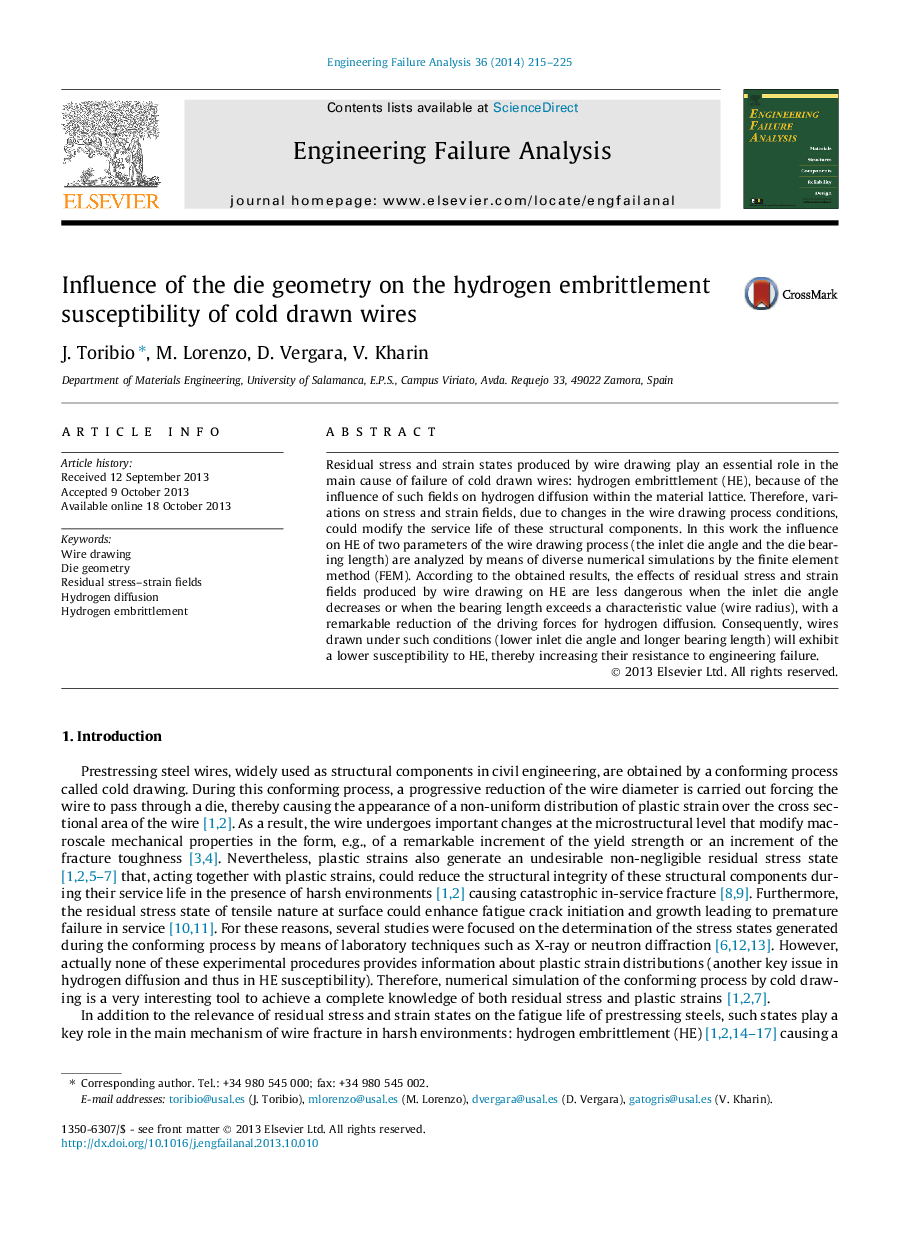| Article ID | Journal | Published Year | Pages | File Type |
|---|---|---|---|---|
| 773933 | Engineering Failure Analysis | 2014 | 11 Pages |
•Die geometry affects residual stress–strain distributions after wire drawing.•Hydrogen diffusion and embrittlement are governed by residual stress–strain fields.•Hydrogen embrittlement susceptibility of the drawn wire increases with the die angle.•That susceptibility decreases with bearing length higher than the wire radius.•Optimum wire drawing: low inlet die angle; large bearing length.
Residual stress and strain states produced by wire drawing play an essential role in the main cause of failure of cold drawn wires: hydrogen embrittlement (HE), because of the influence of such fields on hydrogen diffusion within the material lattice. Therefore, variations on stress and strain fields, due to changes in the wire drawing process conditions, could modify the service life of these structural components. In this work the influence on HE of two parameters of the wire drawing process (the inlet die angle and the die bearing length) are analyzed by means of diverse numerical simulations by the finite element method (FEM). According to the obtained results, the effects of residual stress and strain fields produced by wire drawing on HE are less dangerous when the inlet die angle decreases or when the bearing length exceeds a characteristic value (wire radius), with a remarkable reduction of the driving forces for hydrogen diffusion. Consequently, wires drawn under such conditions (lower inlet die angle and longer bearing length) will exhibit a lower susceptibility to HE, thereby increasing their resistance to engineering failure.
